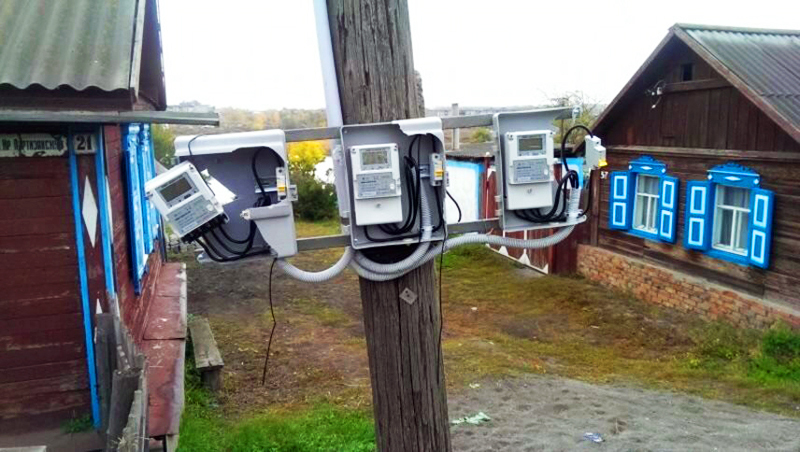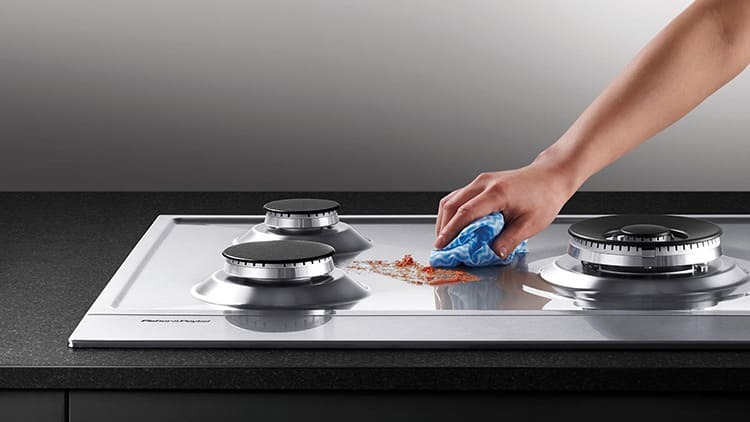
CONTENT
- 1 Features and procedure for cleaning the stove from fat
- 2 What materials and tools are needed for work
- 3 How to clean a gas stove
- 4 How to clean different parts of the stove
Features and procedure for cleaning the stove from fat
According to statistics, the largest amount of dirt in the kitchen, regardless of cleanliness and neatness hostess, it accumulates on the stove, since every day the cooking process takes place on it food. All these boiling, frying or steam are detrimental to cleanliness and it takes a while to achieve the desired surface condition.
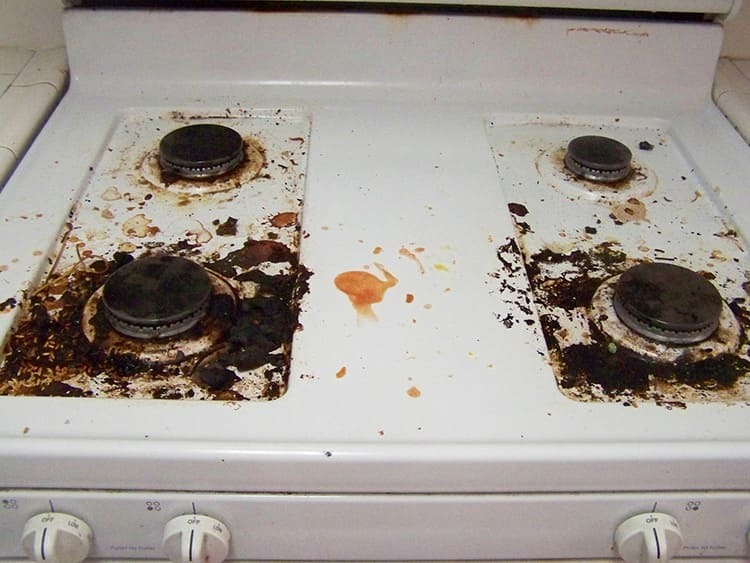
According to the accepted rules, it is required to carry out the cleaning process in the kitchen every day. This does not mean that you need to use chemistry or other aggressive cleansers on a daily basis. When cleaning regularly, you can use only a soft, damp cloth to remove carbon deposits, fresh traces of grease, limescale or food debris.
This rule applies only directly to the frying surface. But there are still many structural details in the slab, which also get dirty over time. These are handles, grilles, inner surface oven. It is recommended to clean them three times a week, also wiping with a damp cloth.
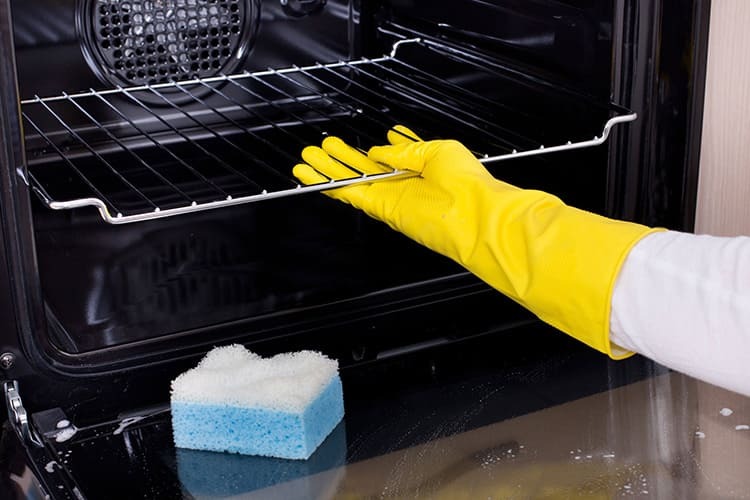
Before starting the cleansing process, you must complete a number of preparation steps, including:
- shutting off the gas supply, which is required for safety reasons;
- removal of all grates and burners, since these parts are cleaned separately;
- it will not be superfluous to prepare rubber gloves to reduce the negative effect of detergents on the skin;
- preparation of tools and cleaning solutions, when used, or preparation of compositions for cleaning according to folk recipes.
After completing the preparatory procedures, you can proceed directly to the process of removing fat or carbon deposits formed after cooking.
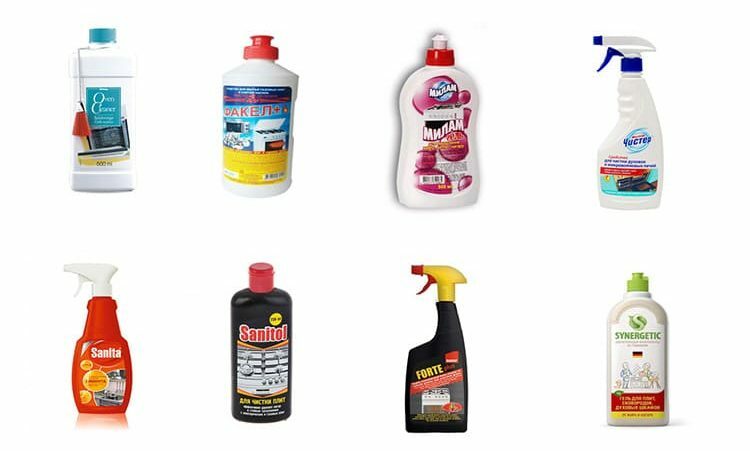
What materials and tools are needed for work
In order for the process of cleaning dirt and grease to proceed quickly and efficiently, it is recommended to prepare all the necessary tools and cleaning agents. This list may be different, but, in general, it should include a number of mandatory items:
- cleaning agent or solution, while it is not recommended to take abrasive pastes that can damage the enamel;
- soft brush or sponge;
- a rag, preferably lint-free;
- rubber gloves to prevent damage to the skin of the hands.

Some may find scrapers suitable for a gas hob that can be used with induction hobs. But their use is allowed only in the most extreme cases, in order to prevent damage to the enamel coating, which will lead to the rapid appearance of rust.
IMPORTANT!
It should be borne in mind that even the most advertised means for cleaning the stove will not lead to an immediate positive result. Each composition is required to be applied for some time to the surface of the stain, and only then to start cleaning.
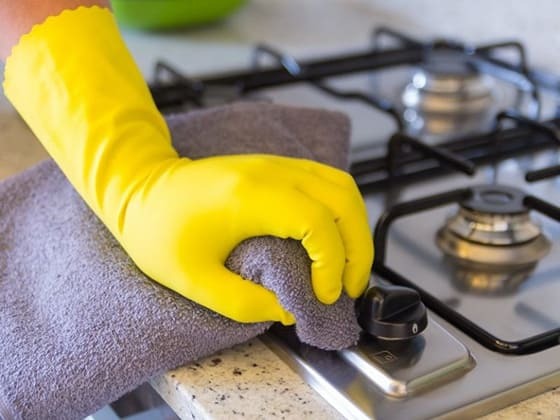
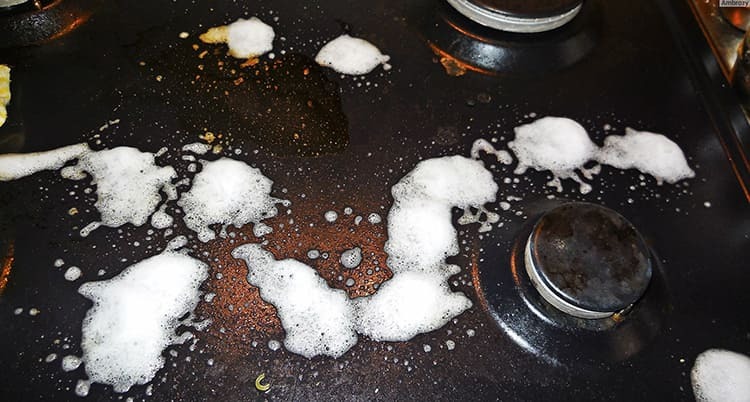
How to clean a gas stove
There are many household products that can quickly and effectively remove dirt, grease or carbon deposits from the surface of a gas or other stove. But not every housewife seeks to use these compositions due to two objective reasons: their considerable cost, which increases in terms of efficiency, and harmfulness.
TOINFORMATION!
Chlorine can still be found in many cleaning products, which irritates the mucous membranes of the respiratory tract and also causes allergic reactions on the skin.
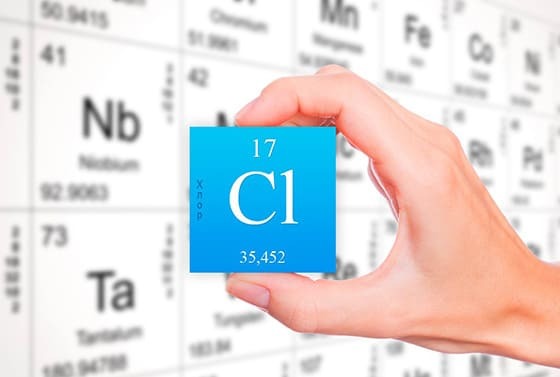

A good alternative to purchased products is the use of folk recipes that have been tested by more than one generation.
Folk recipes
To prepare a detergent composition, it is not at all necessary to purchase chemical reagents or ready-made synthetic products. Everything can be prepared from the ingredients at hand, knowing the recipe.
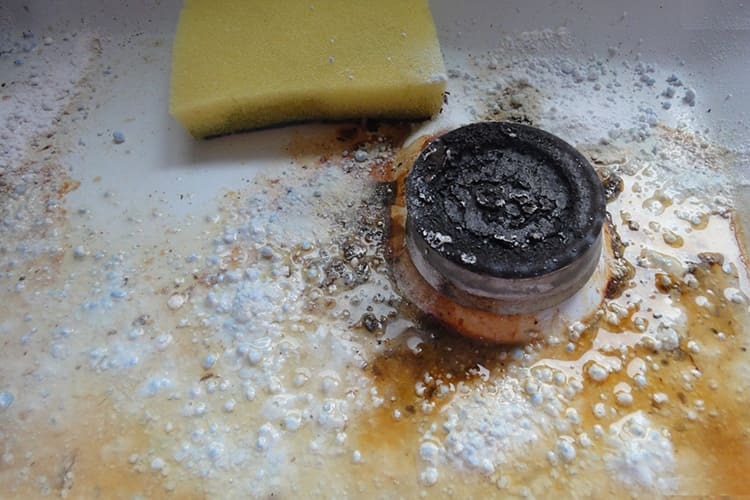
Baking soda
The leader among cleaning agents that can be found on the shelves of any kitchen. It has a good level of degreasing of surfaces, is safe for health and costs a mere penny. To achieve the desired cleaning and at the same time not to damage the enamel, you should first wipe the surface of the stove a slightly damp sponge to create conditions for softening the powdery composition, thereby preventing spoilage cover. Next, a small amount of baking soda is applied to the stain. It must be left for at least half an hour, which will soften the dirt and easily remove it with a regular cloth.
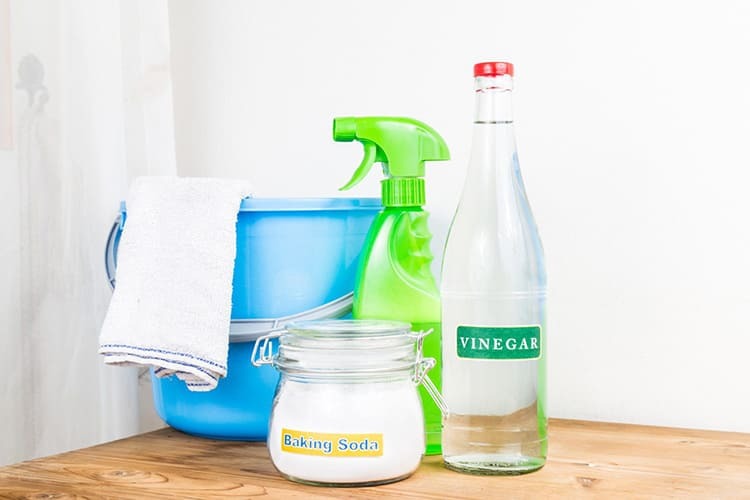
Vinegar and soda
Another way to get rid of stubborn grease stains on the surface of a gas stove is to use a tandem of vinegar essence and baking soda. The difference between a simple sodium bicarbonate treatment is that vinegar is sprayed onto the contaminated surface instead of water. Next, soda is also poured, and after a certain time it is removed with a rag.
TOINFORMATION!
You can use one vinegar, which is applied to the surface of the stove or a separate spot and left for 20 minutes, after which it can be removed with a rag or damp sponge. But the effectiveness of this method is slightly lower than when using baking soda.

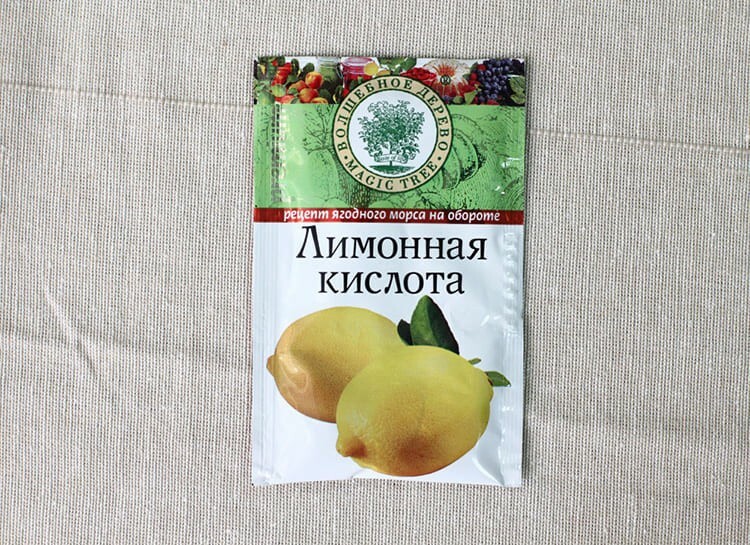
Lemon acid
The third component, which is actively used to cleanse dirt. Instead of acid, you can use the juice of regular lemon. First, it should be dissolved in a small amount of water to reduce the concentration and acidity. Then the resulting solution is applied to the surface and left for at least 15 minutes. Also, when using regular lemon, it can be used to wipe old stains instead of a sponge to soften grease or carbon deposits. Next, the composition is removed with a damp soft cloth.
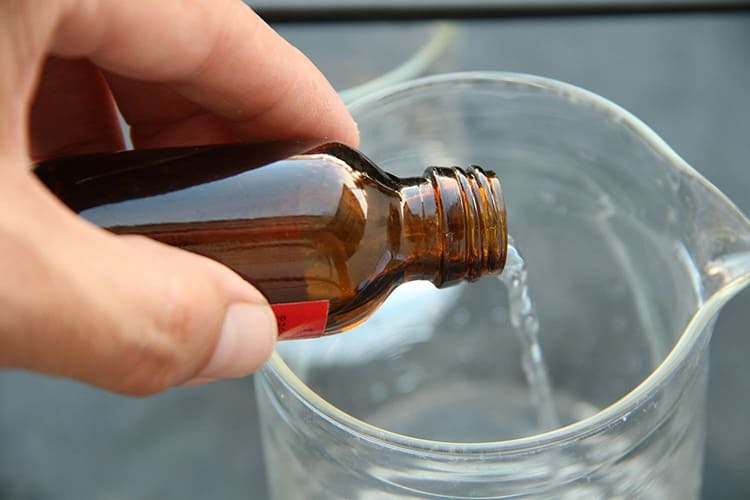
Ammonia
This substance can be used as a stand-alone remedy or in a mixture with anise drops, only immediately follows note that cleaning with such a composition will require a certain strength of spirit, since both substances have a strong aroma. To obtain a cleaning composition, you will need to dilute a teaspoon of alcohol in a glass of clean water. The resulting solution is applied to the surface of the plate and left for 15 minutes, then everything is removed with a rag.
Folk recipes contain a large number of various auxiliary components that can be successfully used to remove fat from the stove. Other means include:
- soap solution, which is made on the basis of laundry soap;
- mustard powder;
- common salt solution;
- glue;
- Activated carbon.
The choice of a specific method remains with the hostess. If there is no desire to wait and prepare special formulations, then the only way out is to purchase synthetic products.
Household chemicals
On the shelves of specialty stores, you can find a wide variety of products for cleansing fat. They differ in cost and quality, so when choosing it is best to rely on the reviews of people who have already tried this or that composition.
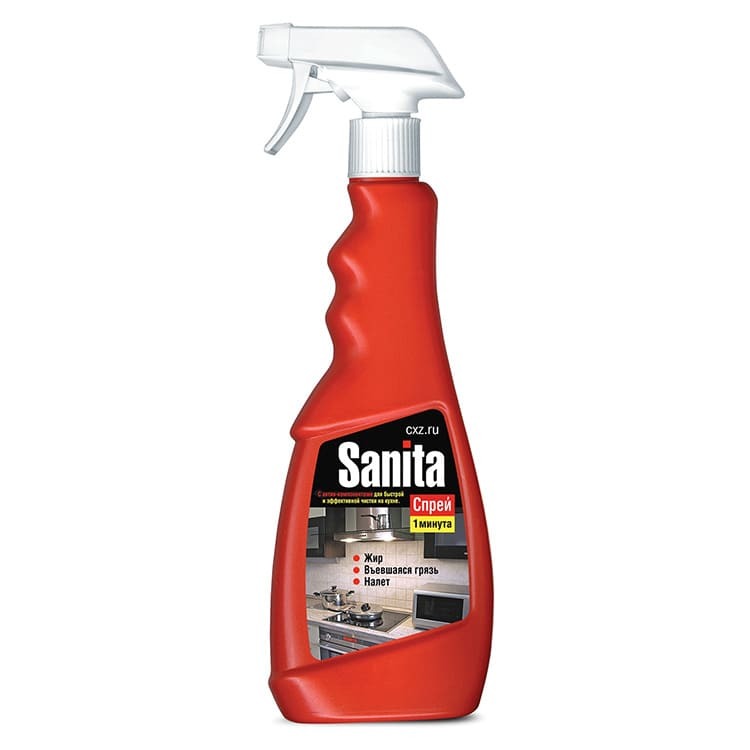
Sanita Spray 1 minute
Among the best products, many cite this composition, which comes in a convenient spray bottle, which makes it easy to apply. The name of the composition is completely justified - in just one minute, the spray copes with the bloom of fat. By leaving it on the stove for up to 10 minutes, even the most stubborn stains can be removed. Despite the manufacturer's assurances that the spray is not capable of causing allergies, it is recommended to use it with gloves. The cost of the product is 107 rubles.
Review on Sanita Spray
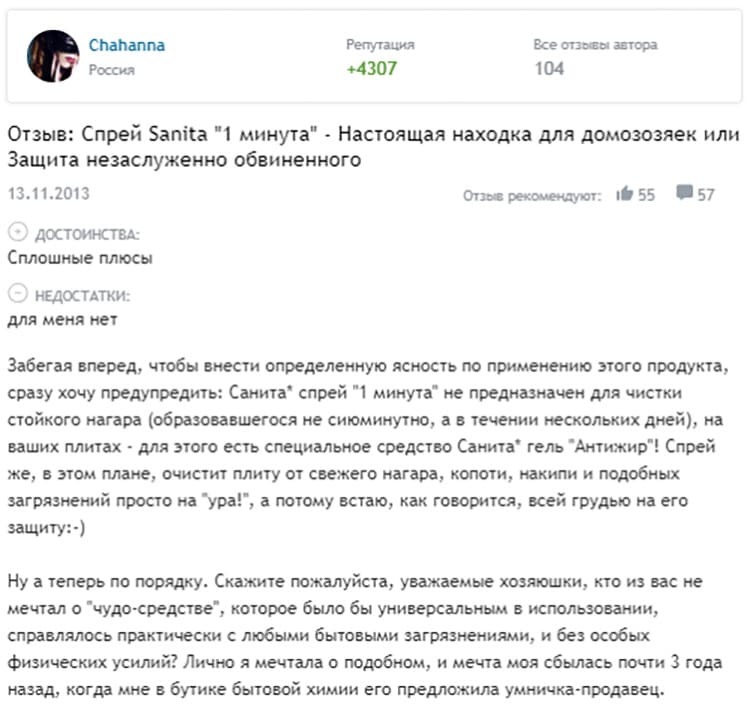
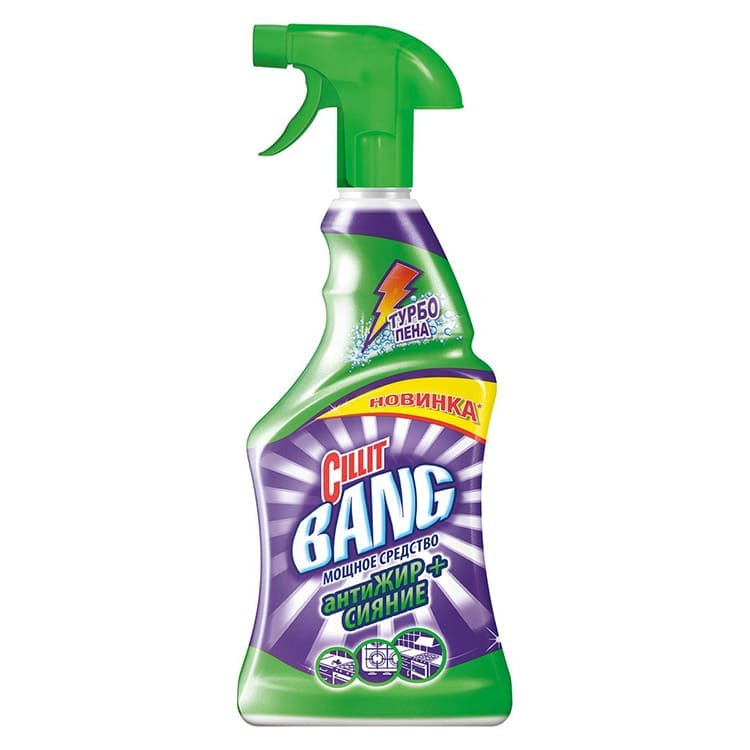
Cillit Bang Antifat
Another quality product, the use of which helps to quickly deal with dirt and grease stains. It can be used not only to clean the kitchen, but also to remove dirt in the microwave, fume hood, and other household appliances. Convenience of packaging with the presence of a spray allows very economical use of the composition. Despite the absence of a distinct odor, harmful vapors can be generated during use, therefore it is recommended to ventilate the room. The cost of the product is 209 rubles.
Review on Cilit Bang Antizhir
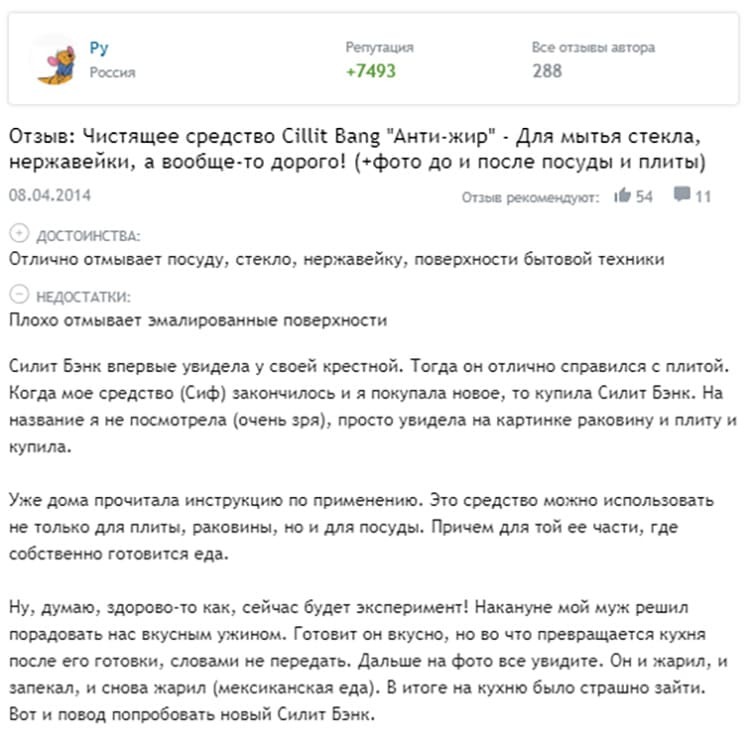
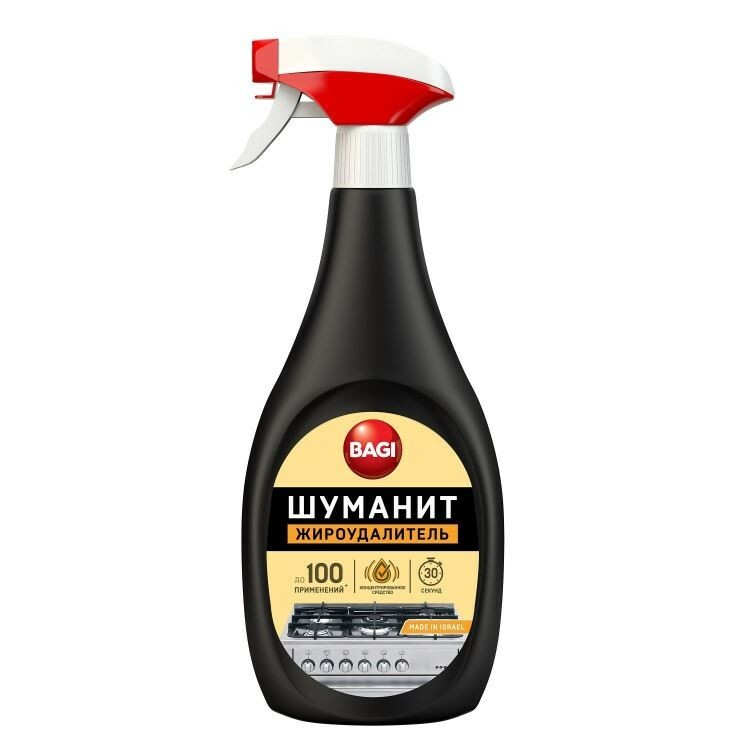
Spray Shumanit
A product that is the most expensive on the market, but at the same time can rightfully be considered the most effective. After application, it removes even the most stubborn stains as quickly as possible. But cost isn't the only drawback. The second significant disadvantage can be considered its toxicity. The emitted odor can cause an allergic reaction, which is why use the product it is possible only in well-ventilated rooms, and it will not be superfluous to add to gloves respirator. The cost of the spray is 520 rubles.
Review on Shumanite for slabs
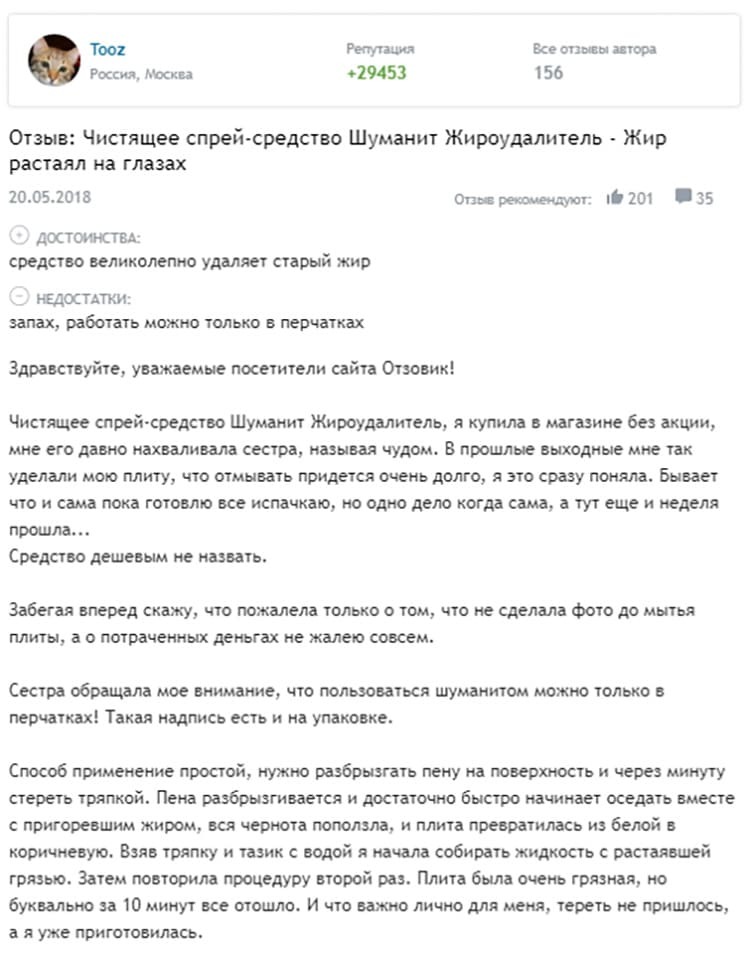
How to clean different parts of the stove
The stove is not only a hob, it is also many parts, which can also become covered with plaque, grease and carbon deposits during use. This means that during a "major cleanup" you will have to clean them too. Each structural detail has its own characteristics.
Lattice
Cleaning the grate will depend on the material of its manufacture, since each has its own special properties. They must be taken into account when choosing a method for achieving purity.
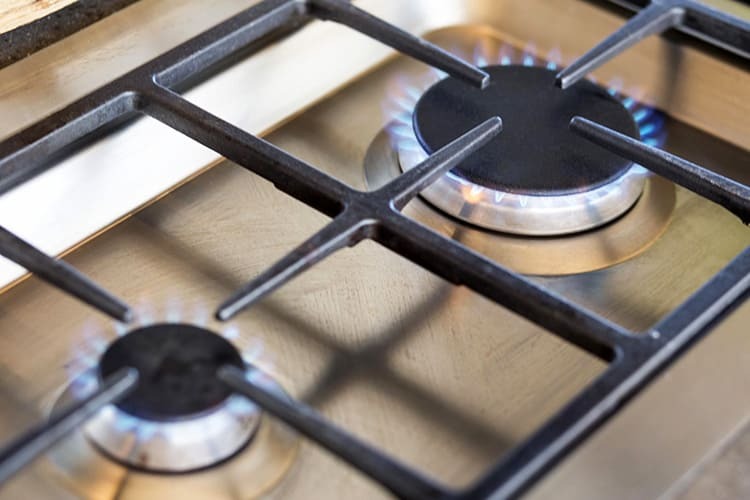
Cast iron
Cast iron is one of the strongest and most durable materials for the manufacture of gratings. But compliance with certain rules is required when removing fat and carbon deposits. The most effective method is considered to be heating the part over an open fire, which allows the remaining particles of dirt and grease to burn out. This can be done over an open fire. In the absence of such an opportunity, you can achieve the desired temperature by turning on all the burners.
IMPORTANT!
During the process of "frying" at home, it is necessary to properly ventilate the room so that timely remove carbon monoxide, combustion products and harmful substances that can be released during combustion fat.
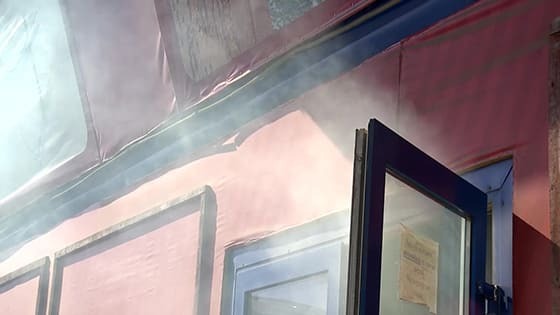
At the end of glowing, the remaining dirt is removed with a regular cloth, and the grill is simply dried.
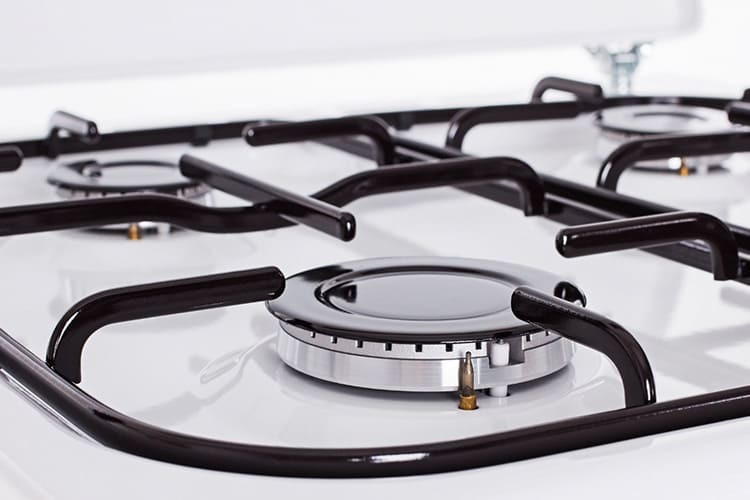
Enameled
The smoothness of the surface, lightness and resistance to moisture makes it easy to wash this type of grill, and they can even be placed in a dishwasher. In its absence, the most effective method will be to prepare a soapy solution and immerse the part there for a couple of hours. Further, the leftovers are simply washed off.
IMPORTANT!
Do not use knives or scrapers when washing the enamelled grates, otherwise the outer layer is likely to be damaged.
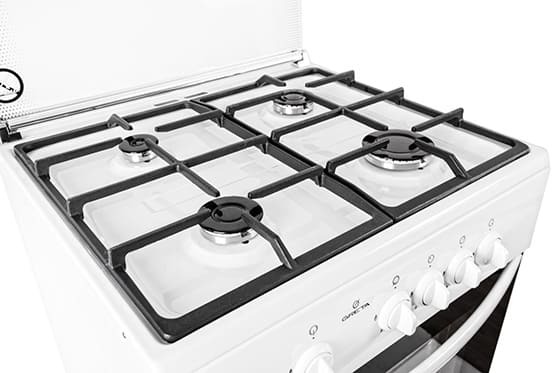
Stainless steel
The most durable and resistant to external influences material, therefore, when cleaning such a grid, it is allowed to use knives, scrapers or metal brushes, as well as any chemical agents. The greatest efficiency can be achieved by pre-soaking the grid in soapy water for several hours. Then the softened dirt is removed with a brush.
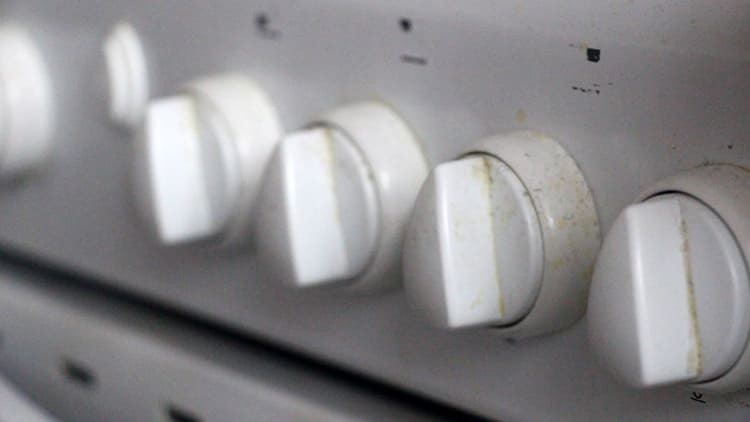
Pens
The method of cleaning the handles, which are also covered with splashing drops, will depend on their design, since there are plate models where this element is removable, but there are non-removable regulators.
Removable handles
This is the easiest option. To cleanse all dirt, it is enough to place the pens in a soapy solution for a few minutes, and then simply clean it with a sponge and detergent. There is also a recipe according to which pens can be boiled in a weak solution of vinegar (ratio of 500 ml of water to 200 ml of essence) for 10 minutes.
Fixed regulators
In this case, the cleansing process will require a little more effort. Tools for removing dirt and grease are a toothbrush, cotton swab, or toothpick. An effective cleansing formula is a mixture of lemon juice and baking soda. A gruel-like mass is preliminarily prepared, into which it is necessary to dip the brush and clean the entire surface. You will need cotton swabs to reach hard-to-reach places.
An easier way would be to use ammonia-anise drops. They should be applied to a cotton pad and simply wipe the surface of the regulator, followed by removal of the composition with water.
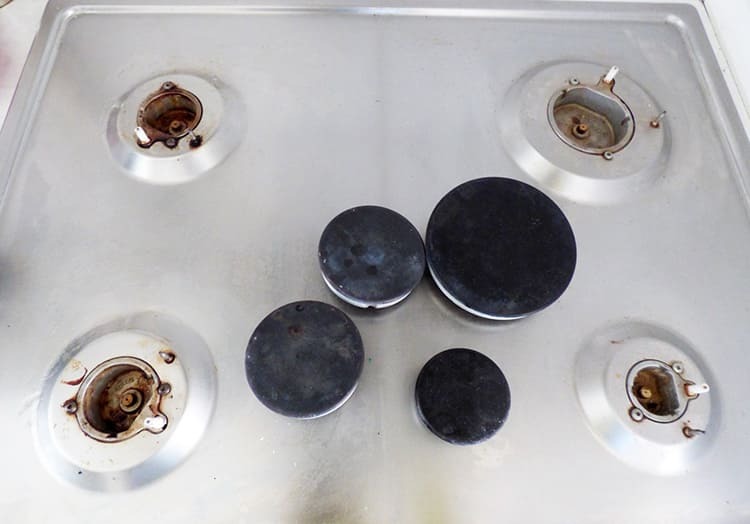
Hotplates
The burners should also be cleaned regularly to prevent clogging, which can clog the nozzles and reduce the flame pressure.
For cleaning, you need to remove the burner and simply place it in a soapy solution. It will be enough 20 minutes to soften the accumulated grease and dirt, and then just rinse the part under the pressure of warm water.
It is also possible to carry out cleaning with table vinegar, which is diluted in a proportion of 2 tbsp. spoons in a glass of water. When using a vinegar solution, the burner is placed in a boiling liquid for half an hour. If small holes are clogged, you can use a toothpick to clean them.
At the end of boiling, the dirt is removed with a cloth under warm water. The final stage will be drying the burners on a towel in an inverted state so that all the water can drain freely.
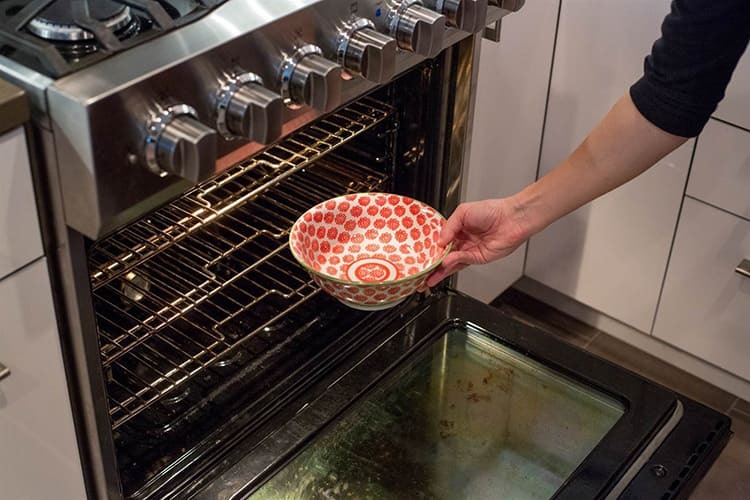
Oven
One of the most difficult parts of the stove to clean is the oven, as it can be difficult to get to the dirtiest places. In this case, you can also resort to folk methods.
The most effective solution is soapy water, which is applied to all oven surfaces and poured onto a baking sheet. After leaving the oven in this state for 20 minutes, it should be turned on at a temperature of 100 ° C and held until the solution has completely evaporated. Further, all surfaces are wiped with a damp cloth.
Another way is to use ammonia, but when using it, the applied composition should be left on the surface of the oven overnight.
IMPORTANT!
The most important nuance when cleaning the oven is to wipe it dry after cleaning in order to prevent the formation of smudges and stains.
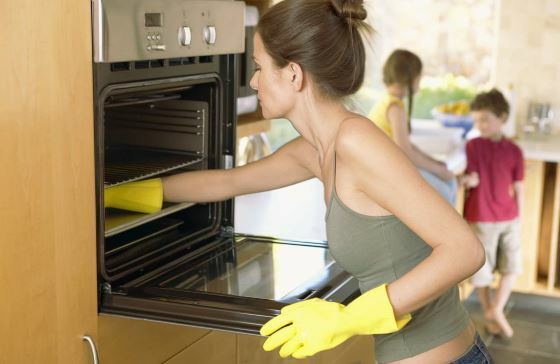

Cleaning your gas stove will be much easier if you maintain it regularly. Then, during general cleaning, less effort will be required. To prevent the formation of stubborn stains, it is recommended:
- immediately eliminate fresh smudges;
- after each cooking, wipe the stove with a damp cloth;
- carry out preventive cleaning at least once a week.
You can once again see the most popular methods for cleaning a gas stove from fat in the video presented.


